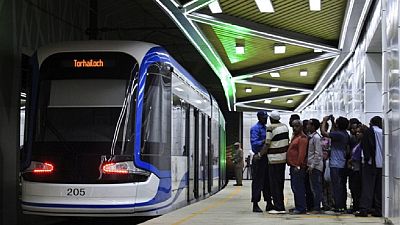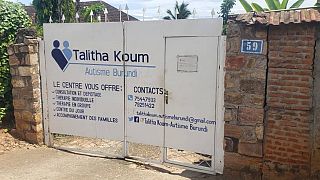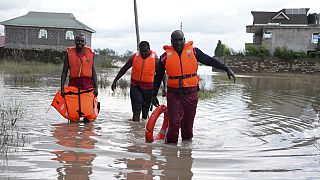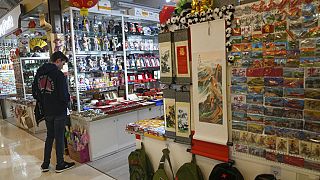Ethiopia
The Addis Ababa tramway is one of the few examples of urban public transport infrastructure in a continent where public transport system is severally constrained.
But 14 months after it was inaugurated, the tramway is struggling to match user expectations.
Problems with the design of the route, abnormally fast wear and tear resulting in breakdowns and delays has not unblocked the streets of the Ethiopian capital.
And despite offering a slightly advantageous tariff on long journeys, the network of constantly overloaded private minibuses still remains the only option for majority of the inhabitants.
Zerayakob Assefa, a retired man, is waiting for the train which is supposed to take him to the eastern suburbs. But when the tram finally arrives, 15 minutes later, it is so crowded that he can not get on board. Assefa is nevertheless positive and says the tram, “is better than nothing”.
Further on, an exasperated passenger escapes from a packed car, then lashes out: “I will never take it again.”
Inaugurated in September 2015 and largely financed by Chinese funds, the first modern sub-Saharan tramway was build to help de-congest the capital of the continent’s second most populous country.
The project has already attracted the attention of other African capitals, such as Lagos and Nairobi, who are also planning to launch their own streetcars.
The government had presented the two-line 34 km long system as a jewel of the “new Ethiopia” and an example of the spin-offs of the strong economic growth of the country, one of the most dynamic on the continent, with nearly 10% growth in 2015, according to the World Bank.
Enthusiasm has gone
Growth is likely to slow due to drought and anti-government protests in recent months, which have targeted foreign companies. But this has not prevented the government of Prime Minister Hailemariam Desalegn from continuing to invest money in infrastructure projects built by China such as dams, airport terminals and highways. The tramway was assembled by the China Railway Engineering Corporation (CREC) company and cost $ 475 million, 85% of which was financed by the Chinese Exim bank.
On the day of its inauguration, enthusiastic residents had queued for hours to be the first to use it. But they are now finding that it has not changed the game as they had hoped.
The tram route, which connects the city center to parts of the south and east of the capital, is not sufficiently extensive in the eyes of the users.
Elias Kassa, a professor of railway science at the Norwegian University of Science and Technology in Trondheim, believes that the tramway planners failed to integrate it into the pre-existing bus system.
Users have to walk long distances to get to the stations and then cross streets cluttered with vehicles to go from the tram to the bus, a fault that could affect the network if it is not corrected, according to Kassa.
Some even accuse the tramway of having made the traffic jam worse. “In some places the rails are elevated, at others they cut the roads, leaving arteries blocked,” mumbles Amin Ansar, a minibus driver.
“In places where there are rails, it made traffic worse, because you can not cross on the other side (by car),” he adds.
Not that defects
The wear and tear is also being felt, with about a third of the 41 tramway trains under repair, which only aggravates the delays and congestion of the network.
“We can not say that we have solved the problem of transport,” admits Awoke Mulu, a spokesman for the company managing the tramway, who blames the rapid population growth of this capital which has 4 million inhabitants, and which is projected by the UN to rise to 12 million in 2024.
The company however notes that the tramway has already transported 50 million people and has had a “positive impact”, particularly for low-income people.
“The aim was to respond to the shortcomings of the transport system, especially for people with lower incomes,” Kassa said. “If you take that into consideration, I would say that it has achieved its goal, not entirely, but to some extent.”














00:49
London Marathon: Women's-only world record, Kenyan double victory
00:59
Donors pledge $630 million for conflict-hit Ethiopia
Go to video
Hellen Obiri claims back-to-back Boston Marathon titles, leading Kenyan women's podium sweep
01:04
Kenya proposes treaty to ease Somalia-Ethiopia tensions
00:55
Kenya: 41 passengers rescued after floodwaters swept a bus off a bridge
Go to video
Why has the Somalia-Ethiopia row deepened?